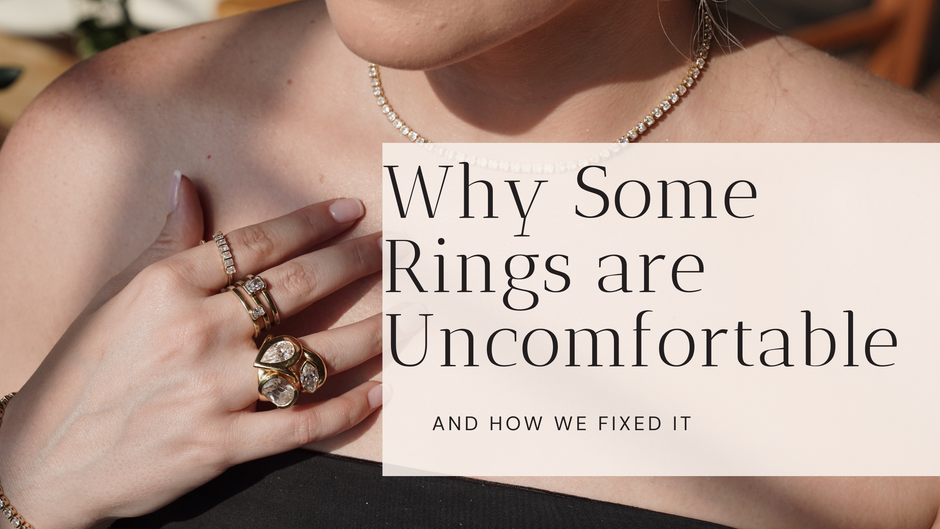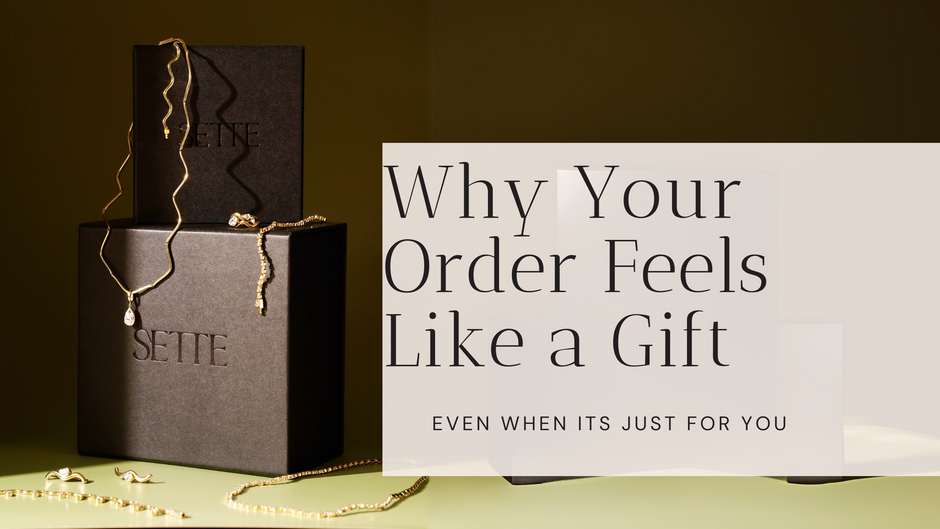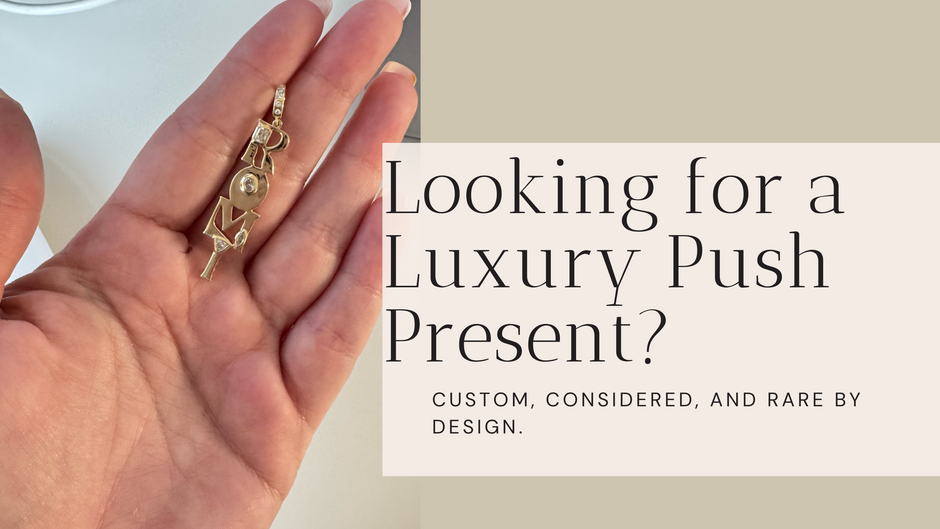TL;DR:
If your ring ever left a deep mark or made your finger feel stiff, that’s not a you problem. That’s a design problem. At SETTE, we think about comfort from the inside out—literally.
Why Most Rings Feel Uncomfortable
You know the feeling. You put on a ring, it looks great... and then an hour later it’s pinching, your skin feels puffy, or there’s a red mark you weren’t expecting.
This usually happens because brands try to cut costs by hollowing out the inside of the ring. You might not see it from the top, but underneath, there’s less gold than there should be. That creates uneven pressure points on your finger. Over time, your skin can swell into those gaps, and the ring starts to feel like it’s working against you.
Sometimes the edges are too sharp. Sometimes the band is too wide. Sometimes the shape just doesn’t match how fingers are shaped to move. Either way, it all adds up to a ring that looks pretty in a box—but feels wrong in real life.
What Makes a Ring Comfortable to Wear
We think about this constantly at SETTE. Before anything gets made, we ask: how will this feel in real life? Will it glide on? Will it stay put? Will someone forget they're even wearing it?
“There’s a difference between designing for wear and designing for margins. We don’t do shortcuts that hurt the customer experience.”
— Isabel, Founder of SETTE
Here’s what we do differently:
1. We don’t hollow out bands to save gold
Unless it’s absolutely necessary—like to create airflow underneath a diamond for easier cleaning—we keep the back of the band solid. And even when we do open a small window for cleaning, we still use enough gold to keep the underside smooth, refined, and sturdy.
This helps the ring sit evenly against your finger and reduces the chance of swelling or imprints during normal wear. If you’ve had a couple martinis or a salty dinner, sure, your hands might puff up. But day to day, a well-made ring shouldn’t leave a dent.
2. We use comfort-fit interiors on all bands
That means the inside of the ring is slightly rounded, so it glides over your knuckle more easily and doesn’t dig into your skin. There’s no scraping, no pinching. Just an easy-on, easy-off fit that actually feels good.
3. We design for the finger, not just the photo
Rings don’t sit flat on a table. They sit on hands that bend, flex, and live your life with you. So we design with real movement in mind. A ring that’s too wide up the finger toward the knuckle can block flexibility, so we pay close attention to proportions—how high it sits, where the width lands, and whether it needs a size adjustment.
4. We reinforce where it matters
The Coquette Pinky Ring is a perfect example. Most brands would stop at 2 millimeters for a pinky band. We took it to 2.5. Your pinky gets knocked around. That extra width adds structure and support without sacrificing wearability.
A Quick Checklist: How to Tell if a Ring Is Comfortable
When shopping for rings (especially online), here’s what to look for:
-
✅ Is the band fully filled in on the underside?
-
✅ Are the edges rounded, not sharp?
-
✅ Is the width appropriate for how high up it will sit on your finger?
-
✅ Are you being guided to size up if the band is wide or contoured?
We ask all of these questions with every single SETTE design. If the answer isn’t yes to all of them, we go back to the drawing board.
Final Thought: A Ring Should Never Fight You
You’re going to wear it. You should actually want to wear it. That’s the bar.
Comfort isn’t an afterthought. It’s part of the design process—same as the diamond shape or gold finish. Jewelry shouldn’t leave a mark. It should leave an impression.






